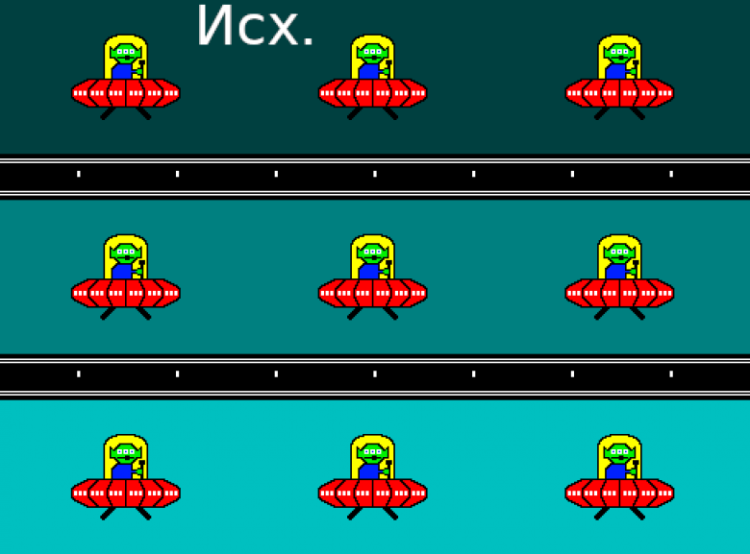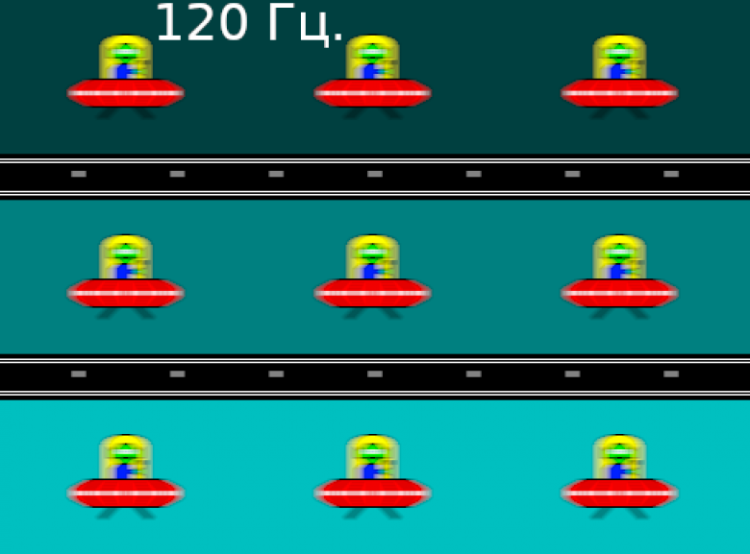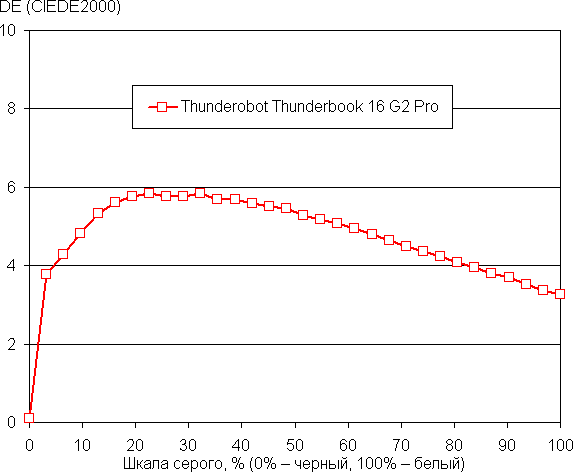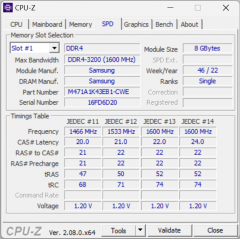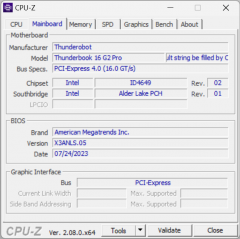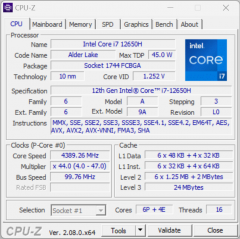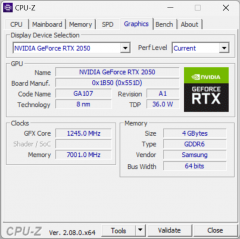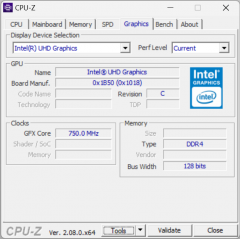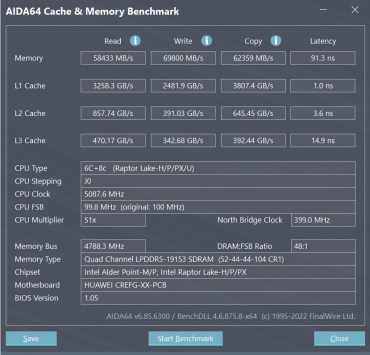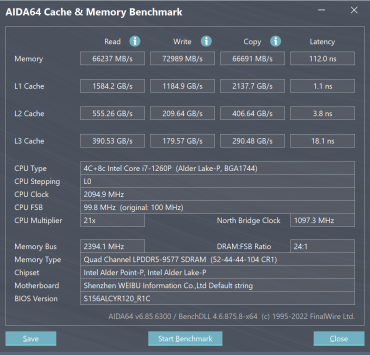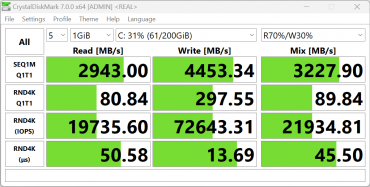Business laptops are typically thin and light devices with integrated graphics. However, today we take a look at an interesting model, which, despite its business-like appearance, is equipped with an Nvidia GeForce video card. And it's not just a graphics solution: it supports ray tracing.

On the manufacturer's web page, the hero of our current review of the 2023 model is presented in a single modification without hardware options.
Configuration and equipment
| Thunderbook 16 G2 Pro | ||
|---|---|---|
| CPU | Intel Core i7-12650H: 6 P-cores (12 threads) up to 4.7 GHz + 4 E-cores (4 threads) up to 3.5 GHz; TDP 35-45 W (up to 115 W with Turbo Boost) | |
| RAM | 2 × 8 GB DDR4-3200 SO-DIMM Samsung M471A1K43EB1-CWE in dual channel mode | |
| Video card | integrated Intel UHD Graphics (1.7 GHz, 64 execution units) discrete Nvidia GeForce RTX 2050 Laptop with 4 GB GDDR6 (60 W) | |
| Screen | 16 inches, IPS, 2560×1600 (16:10), 120 Hz, sRGB color space coverage 99%, maximum brightness 324 cd/m²; output delay 5 ms | |
| Sound subsystem | 2 two-watt speakers | |
| Storage device | 512 GB NVMe SSD SSST/Kioxia CL5-8D512, PCIe Gen 4.0 ×4, a second drive can be installed in an empty M.2 slot | |
| Card reader | No | |
| Wireless connection | WiFi | Intel AX201NGW Wi-Fi 6 (2.4/5 GHz, 802.11ax, 2x2 MIMO) |
| Bluetooth | Bluetooth 5.2 Dual Band | |
| Interfaces and ports | USB | 3 × USB 3.0 Type-A 2 × USB 3.2 Gen2 Type-C with DisplayPort and Power Delivery support |
| RJ-45 | No | |
| Video outputs | 1 × HDMI 2 × DisplayPort via USB Type-C | |
| Audio connectors | combined (minijack 3.5 mm) | |
| Input Devices | Keyboard | with backlight (three brightness levels) |
| Touchpad | clickpad | |
| IP telephony | Webcam | 720p without mechanical shutter |
| Microphone | stereo | |
| Kensington lock slot | There is | |
| Fingerprint scanner | No | |
| Battery | three-cell lithium-ion, 70 Wh | |
| Dimensions | 356×248×22 mm (18 mm excluding supports) | |
| Weight without power supply | 1.75 kg | |
| Power adapter | FSP Group, 19 V / 7.89 A (150 W), 402 g | |
| operating system | Windows 11 Pro |
The Thunderbook 16 G2 Pro features a traditional business model form factor with connectors and ports on the left and right side panels, a 16-inch screen with a 2.5K resolution and a 16:10 aspect ratio. Pay attention to the output path of the cooling system hidden behind the protrusion of the cover. This device comes preloaded with Windows 11 Pro operating system, meeting business laptop standards. In addition to the standard kit, a discrete graphics card is included, which makes its configuration even more productive. Two USB Type-C ports allow video output, allowing you to connect up to three external monitors simultaneously using a separate HDMI port.
If we consider other models from the Thunderbook family, then in addition to the Thunderbook 16 G2 Pro, which we talked about, there are two more models with less powerful processors:
Thunderbook 14 G3 with 14-inch screen (2880x1800 resolution, 120 Hz refresh rate), based on an Intel Core i5-13500H processor with 16 GB LPDDR5, 512 GB NVMe storage and two USB3.2 Gen2 ports, one of which is compatible with Thunderbolt 4.
Thunderbook 16 G2 (not Pro) with 16-inch screen (2560x1600 resolution, 120 Hz refresh rate), based on an Intel Core i5-12450H processor with 16 GB DDR4, 512 GB NVMe storage and two USB3.2 Gen2 ports without Thunderbolt 4 support.
However, unlike the Thunderbook 16 G2 Pro, these models do not come with a discrete graphics card; Instead, it is proposed to use an integrated video accelerator.
Appearance and ergonomics
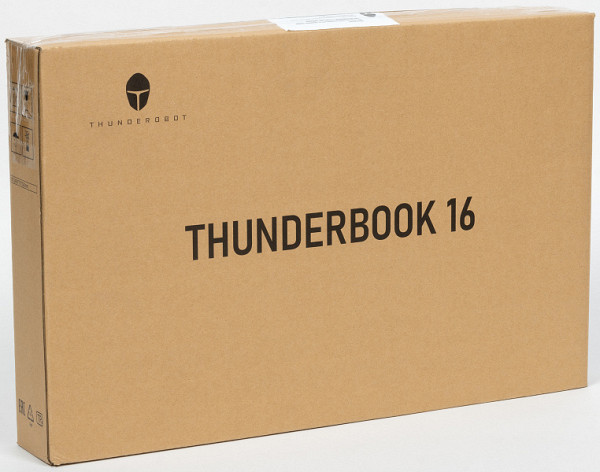
The outer packaging is designed to protect the contents during transportation and storage.

The inner box is decorated laconically, but tastefully.
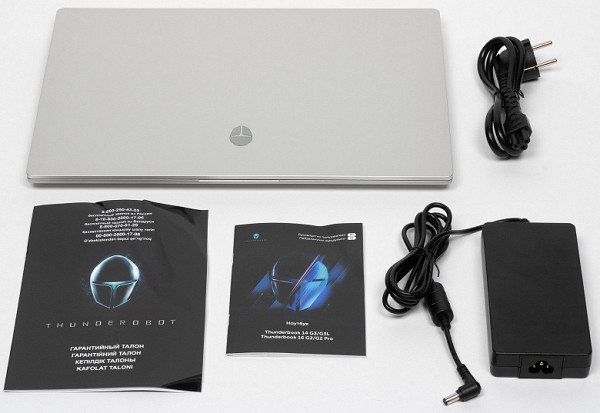
Delivery set: the device itself, a power supply and a cable for connecting the latter to a laptop, a warranty card and a quick start guide for the system.
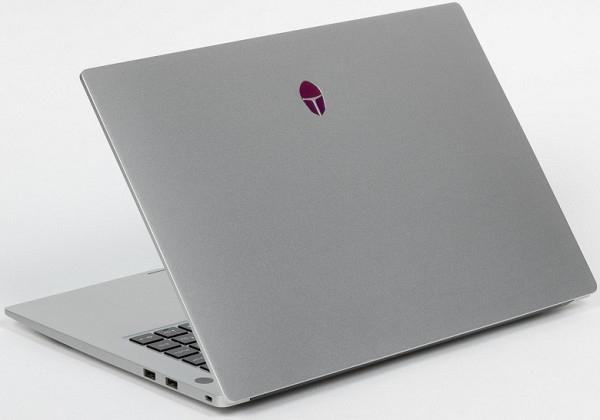
On the lid there is only the Thunderobot series logo with mirror surfaces. It is not illuminated during operation.

The body is made of a durable aluminum and magnesium alloy, ensuring reliability and durability. The matte surface of the lid and keyboard panel is not prone to fingerprints during normal use. Hinges and closers make it easier to open the lid, which in the closed position is also securely held by magnets located under the keyboard panel on the right and left at the front edge of the case. There is a seam around the detachable parts of the laptop, but the lid can only be picked up from the front, where there is a small ledge on the base. After this, the lid can be easily lifted and opened, while the housing remains stable.

When opening the lid, the angle reaches 165°, which, although not particularly useful in everyday work, is still preferable to the more limited angle of 140°-120°.
The Thunderbook 16 G2 Pro has a 16-inch screen, making the term «notebook» a bit of an exaggeration. The 16:10 aspect ratio, as opposed to the traditional 16:9, increases the vertical size of the screen, which makes the device more convenient for working with office applications. The weight of 1.75 kg for this screen size is not too heavy for a portable device.
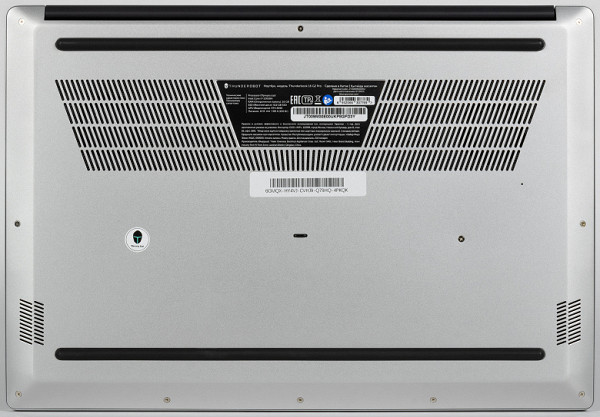
There's nothing special on the bottom of the laptop other than the front and rear supports, a small vent with air slits for the cooling system, and side slits for sound output through the speakers.

The details are not visible from the back, but between the lid hinge and the base there are gaps for the release of heated air, hidden behind a corner ledge.

On the left side of the device there is a coaxial power connector with a power indicator, a USB Type-A port, a standard HDMI for video output, two USB Type-C ports and a combined audio jack for headphones and microphone. Both Type-C ports support DisplayPort video transmission and PowerDelivery, and either one can be used to charge the laptop.

There is a noticeable recess on the front where you can hook the edge of the cover to open the device.

The right side panel has two USB Type-A ports and a Kensington lock.

The power switch is located to the right of the keyboard on the front panel frame and is recessed flush with it. Due to its location, shape and size, it cannot be confused with other buttons.
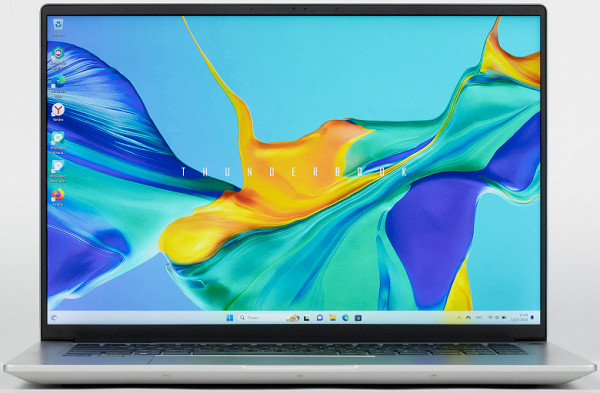
Around the screen, as usual, there is a frame, the width of which is 6 mm on the right and left, and 8 mm on the top.
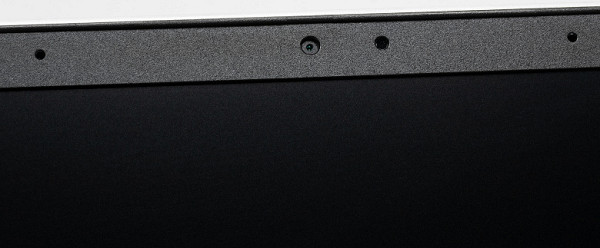
A miniature camera (720p resolution) is built into the top of the display, which is only suitable for video conferencing. It is not equipped with a mechanical curtain.

The laptop uses a membrane-type keyboard with a small (about 1.5 mm) vertical button travel.
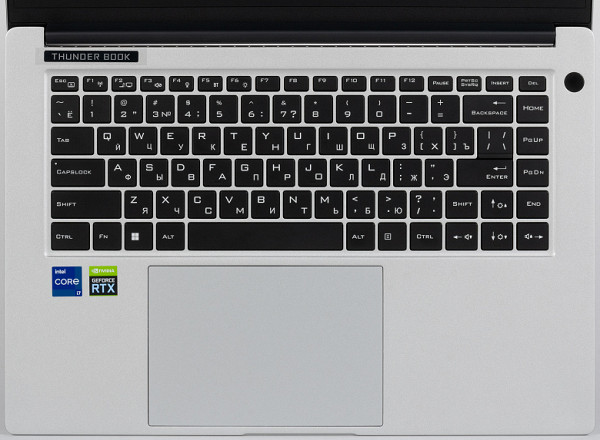
This laptop's keyboard does not include a number pad, making it less functional than standard desktop keyboards. It is equipped with full-size arrows and navigation buttons are retained. The alphanumeric keys measure 16x16mm with 3mm space between them. The left Shift key is 41mm wide, the right Shift key is 18mm wide, the BackSpace key is 29mm wide, the Enter key is 33mm wide, and the Space key is 92mm wide. Function keys are reduced to 14x8 mm. The key markings are readable, both in Latin and Cyrillic. However, the characters of the Russian alphabet are made from two different sets, and some of them are smaller in size, which looks sloppy.

The keyboard is equipped with a backlight with two brightness levels, as well as the ability to turn it off completely, which is regulated by pressing the Fn+F6 key combination again. The backlight illuminates all characters and button edges evenly.

Below the keyboard is a spacious, slightly recessed touchpad measuring 140x90 mm, which does not have dedicated buttons. It responds best to pressure in the first two-thirds closer to the user, while the farthest part is less sensitive. With gestures that involve touching a surface, the touchpad works without problems.
The lower part of the Thunderobot Thunderbook 16 G2 Pro laptop is secured with twelve screws, one of which is hidden under the factory sticker.
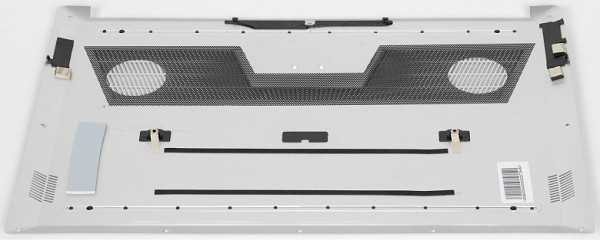
On the cover, when viewed from the inside, a thermal pad for dissipating heat from the system drive attracts attention.
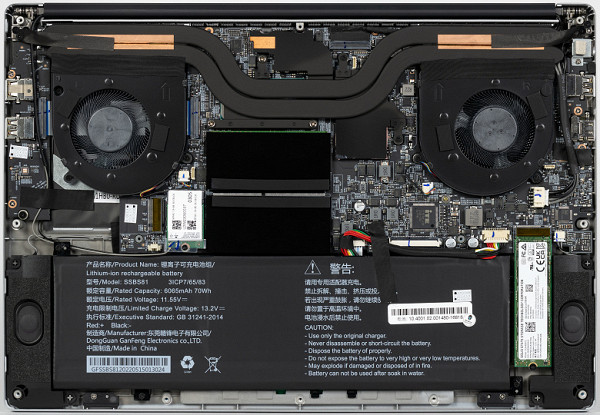
The quality of factory soldering does not raise any questions, since the process is carried out on automated lines, but the assembly requires improvements: the antenna wires of the wireless adapter and the fan power supply are not sufficiently protected, as is the battery power cable. Extensive use of adhesive tape for fixation.
The interior of the case is dominated by the cooling system, battery, slots for RAM modules and speaker mounts. The printed circuit board is made in a split design and consists of two parts, the main one and an additional right satellite, which is on the left in the image.
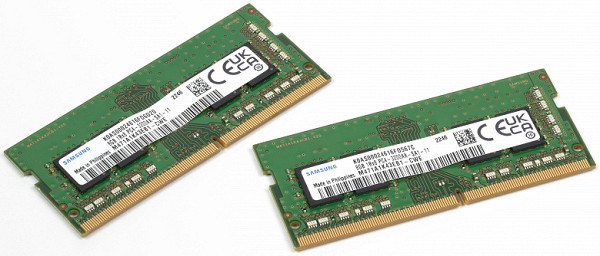
The machine has 16 GB of DDR4-3200 RAM in the form of two 8 GB SO-DIMM Samsung M471A1K43EB1-CWE models. RAM operates in dual-channel mode.
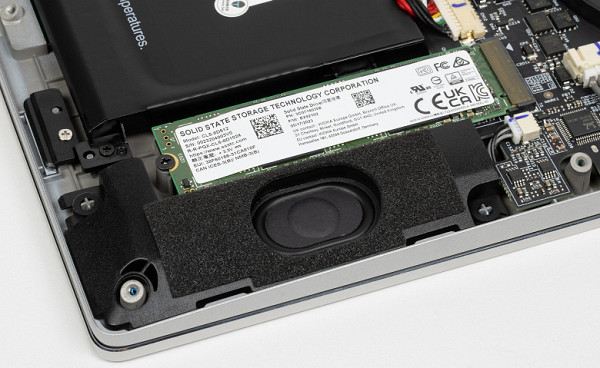
Thunderobot Thunderbook 16 G2 Pro is equipped with a 512 GB NVMe drive SSST/Kioxia CL5-8D512 with a PCIe Gen 4.0 ×4 connection interface.
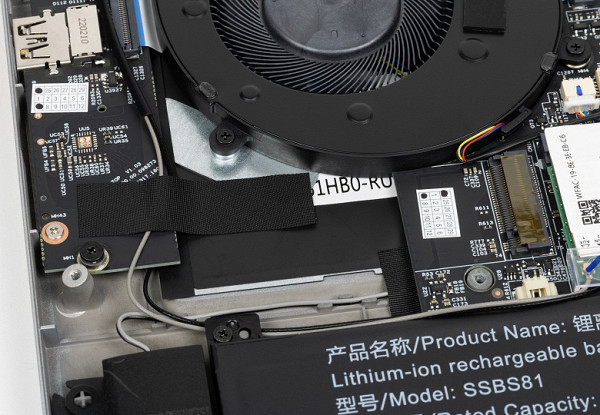
The motherboard has a second M.2 slot, which allows you to add another NVMe drive. Since both slots have the same characteristics, it is possible to create a combined logical storage from two SSDs of the same specifications. This makes it possible to double the total data volume and processing speed using RAID0 (Stripe) or provide double data redundancy for increased data reliability using RAID1 (Mirror).
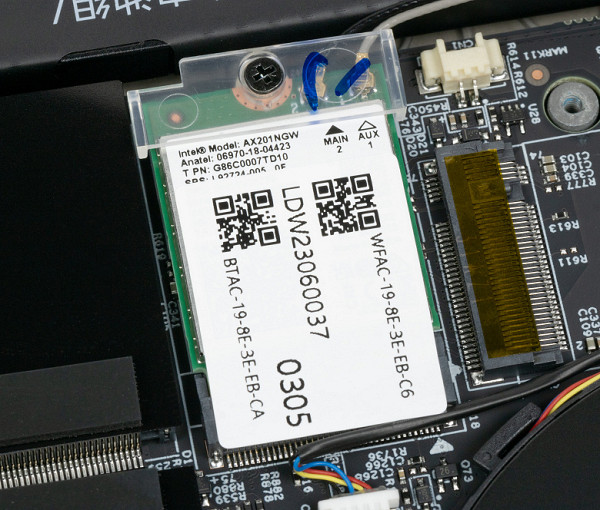
Between the available M.2 slot and the RAM slots is a dual-band PCIe wireless adapter Intel AX201D2W (Wi-Fi 6, 802.11ax), operating in the 2.4, 5 and 6 GHz bands. The adapter supports simultaneous transmission and reception of data using 2x2 MIMO technology, which improves performance over multiple connections. It also provides Bluetooth connectivity.
Screen
The laptop uses a 16-inch IPS matrix with a resolution of 2560×1600 pixels. The outer surface of the matrix is black, hard, with a semi-matte finish (with a slight specularity). There are no anti-glare coatings or filters, and there is no air gap. When operating from the network or from a battery and manually adjusting the brightness (there is no automatic adjustment based on the light sensor), the maximum brightness value reaches 324 cd/m² (measured in the center of the screen on a white background). This is a high enough brightness level that allows you to comfortably work or play outside on a clear day, especially if you are in the shade.
To evaluate screen readability outdoors, we use the following criteria obtained from testing screens in real conditions:
| Maximum brightness, cd/m² | Conditions | Readability Score |
|---|---|---|
| Matte, semi-matte and glossy screens without anti-glare coating | ||
| 150 | Direct sunlight (more than 20,000 lux) | unreadable |
| Light shadow (approx. 10,000 lux) | we can barely read | |
| Light shade and sparse clouds (no more than 7500 lux) | work is uncomfortable | |
| 300 | Direct sunlight (more than 20,000 lux) | we can barely read |
| Light shadow (approx. 10,000 lux) | work is uncomfortable | |
| Light shade and sparse clouds (no more than 7500 lux) | work comfortably | |
| 450 | Direct sunlight (more than 20,000 lux) | work is uncomfortable |
| Light shadow (approx. 10,000 lux) | work comfortably | |
| Light shade and sparse clouds (no more than 7500 lux) | work comfortably |
These criteria are very conditional and can be revised as data accumulates. It is important to note that improved readability can occur if the matrix has transreflective properties, when part of the light is reflected from the substrate, which allows you to see the image even when the backlight is turned off. Glossy matrices can also be useful because even in direct sunlight, you can sometimes rotate the screen so that it reflects something dark and uniform (like the sky), which improves readability. In rooms with bright artificial lighting (about 500 lux), comfortable reading is possible even at low screen brightness (50 cd/m² and below), so maximum brightness in such conditions is not a key parameter.
Let's return to the screen of the laptop under test. When the brightness is set to the minimum value (0%), the screen brightness decreases to 33 cd/m². This allows you to achieve a comfortable level of brightness in complete darkness.
At any brightness level, there is no significant backlight modulation, which eliminates screen flickering (no PWM). To demonstrate this, let's present graphs of brightness (vertical axis) versus time (horizontal axis) for different brightness settings:
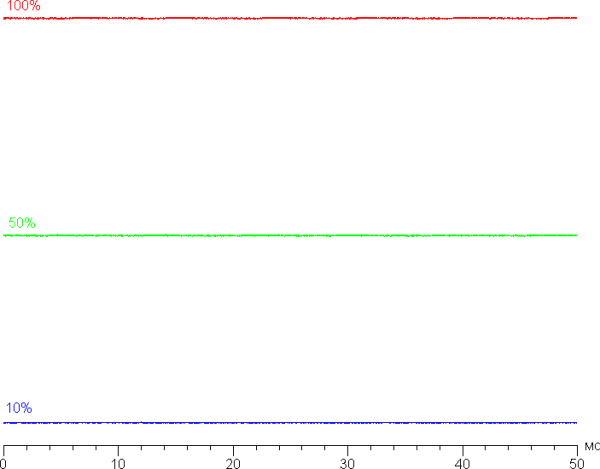
This laptop uses an IPS matrix. Microphotographs show a typical IPS subpixel structure (black dots are dust on the camera matrix):
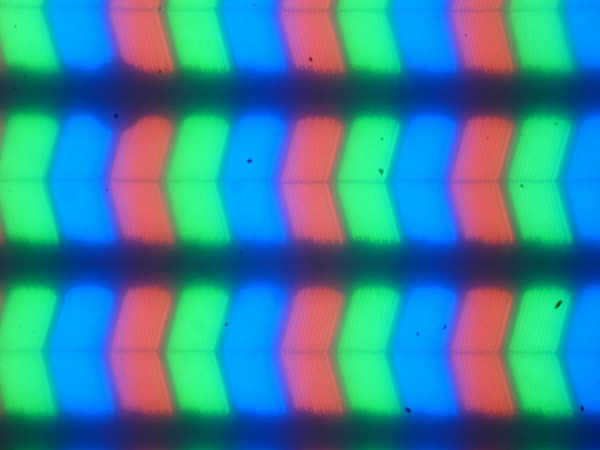
Focusing on the screen surface revealed randomly located surface microdefects responsible for the matte properties:

The grain of these defects is several times smaller than the size of the subpixels (the scale of these two photographs is approximately the same), so focusing on microdefects and the “jumping” of focus across subpixels when changing the viewing angle are weakly expressed, because of this there is no “crystalline” effect.
We measured brightness at 25 points on the screen, located in increments of 1/6 of the screen width and height (screen borders not included). Contrast was calculated as the ratio of the brightness of the fields at the measured points:
| Parameter | Average | Deviation from the average | |
|---|---|---|---|
| min., % | max., % | ||
| Black field brightness | 0.27 cd/m² | −13 | 30 |
| White field brightness | 310 cd/m² | −7,4 | 8,5 |
| Contrast | 1200:1 | −27 | 9,5 |
If you step back from the edges, the uniformity of the white field is good, but the uniformity of the black field and, as a result, the contrast is worse. The contrast by modern standards for this type of matrix is higher than typical. It is visually clear that the black field in some places is highlighted mainly closer to the edges. However, the unevenness of black illumination is visible only in very dark scenes and in almost complete darkness; it should not be considered a significant drawback. Note that the rigidity of the cover is low, it is slightly deformed at the slightest applied force, and the deformation greatly changes the nature of the illumination of the black field.
The screen has good viewing angles without significant color shift even with large viewing deviations from perpendicular to the screen and without inverting shades. However, when deviated diagonally, the black field is greatly brightened, but remains conditionally neutral gray (as seen with the eyes).
The response time for the black-white-black transition is 9 ms (5 ms on + 4 ms off), the transition between halftones of gray in total (from hue to hue and back) takes an average of 13 ms. The matrix is fast, but there is no obvious overclocking.
Let's see if this matrix speed is enough to output images at a frequency of 120 Hz. Here is the dependence of brightness on time when alternating white and black frames at a 120 Hz frame rate:
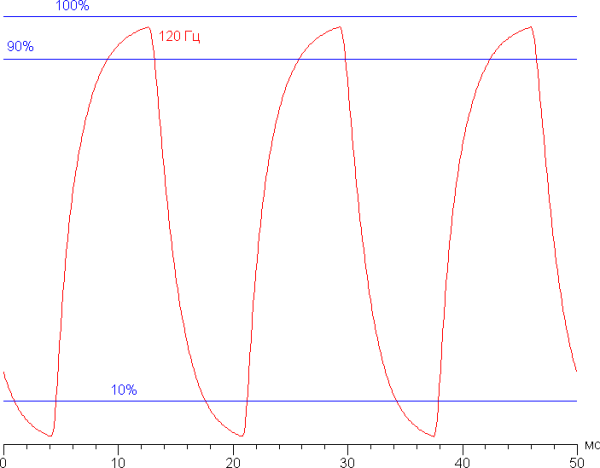
It can be seen that at 120 Hz the maximum brightness of the white frame is above 90% of the white level, and the minimum brightness of the black frame is below 10% of the white level. The final amplitude is more than 80% of the brightness of white. That is, according to this formal criterion, the speed of the matrix is sufficient for full image output with a frame rate of 120 Hz.
For a clear idea of what such a matrix speed means in practice, and what overclocking artifacts may be, we present a series of images taken using a moving camera. Such pictures show what a person sees if he follows an object moving on the screen with his eyes. Recommended settings were used (motion speed 960 pixels/s), shutter speed 1/15 s.
It can be seen that, other things being equal, image clarity increases as the refresh rate increases.
Let's try to imagine what would happen in the case of a matrix with instant pixel switching. For it, at 60 Hz an object with a movement speed of 960 pixels/s is blurred by 16 pixels, and at 120 Hz — by 8 pixels. Blurred as the focus moves at the specified speed and the subject remains stationary for 1/60 or 1/120 of a second. To illustrate this, let's simulate a blur of 16 and 8 pixels.
It can be seen that the image clarity in the case of this laptop is slightly lower compared to an ideal matrix.
We determined the total output delay from switching video buffer pages to the start of displaying the image on the screen (remember that it depends on the operating characteristics of Windows OS and the video card, and not just on the display). At 120Hz refresh rate the latency is 5ms. This is a very small delay, it is absolutely not felt when working on a PC, and in very dynamic games it will not lead to a decrease in performance.
There are several refresh rates to choose from in the screen settings.
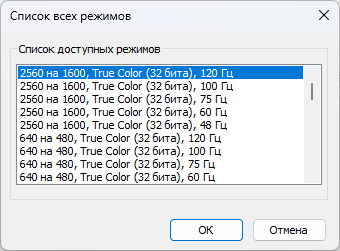
At least at the native screen resolution, the output comes with a color depth of 8 bits per color. Judging by the data on the control panel with video adapter settings, the screen supports Adaptive Sync in the range from 48 to 120 Hz.
Next, we measured the brightness of 256 shades of gray (from 0, 0, 0 to 255, 255, 255). The graph below shows the increase (not absolute value!) in brightness between adjacent halftones:
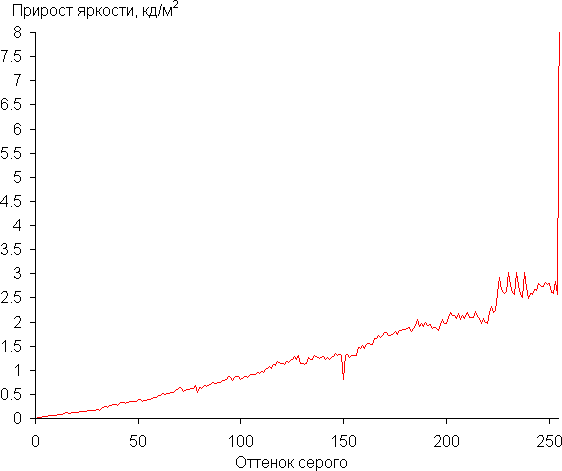
The increase in brightness on the gray scale is mostly uniform (except for white, which is much brighter than the lightest shade of gray), and each subsequent shade is brighter than the previous one. In the darkest area, all shades are distinguished hardware-wise and visually:
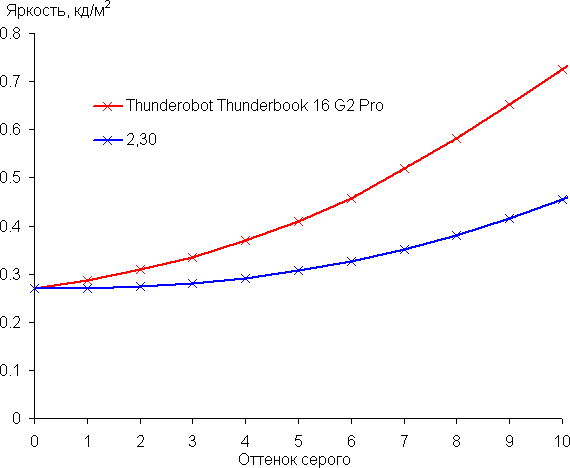
The resulting gamma curve was fitted with a value of 2.30, which is slightly higher than the standard value of 2.2, so the picture is slightly darker. In this case, the real gamma curve slightly deviates from the approximating power function:
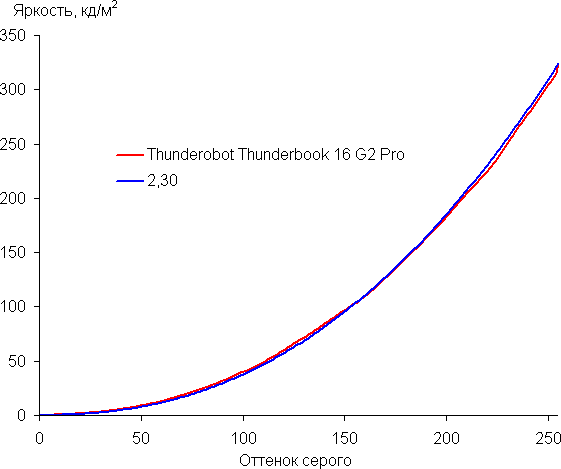
Color gamut is close to sRGB:
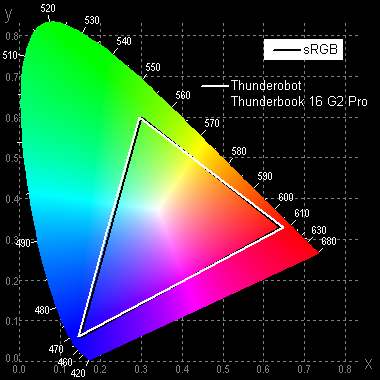
Therefore, visually, the colors of images oriented to output in the sRGB space on this screen have a natural saturation. Below is the spectrum for the white field (white line), superimposed on the spectra of the red, green and blue fields (lines of the corresponding colors):
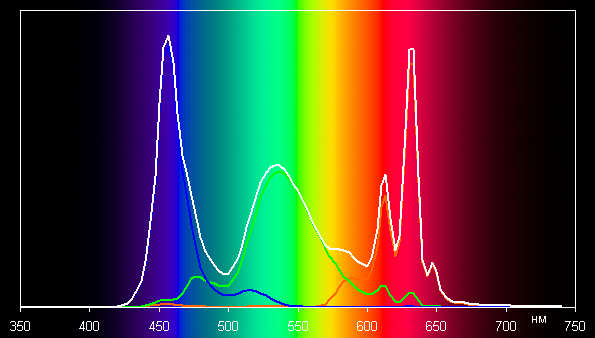
Apparently, this screen uses LEDs with a blue emitter and green and red phosphors (usually a blue emitter and a yellow phosphor), which, in principle, allows for good separation of the components. Yes, and the red phosphor apparently uses so-called quantum dots. However, specially selected filters cross-mix the components, which narrows the coverage to sRGB.
The balance of shades on the gray scale is acceptable, since the color temperature is quite close to the standard 6500 K, and the deviation from the blackbody spectrum (ΔE) is below 10, which is considered an acceptable indicator for a consumer device. At the same time, color temperature and ΔE change little from hue to hue — this has a positive effect on the visual assessment of color balance. (The darkest areas of the gray scale can be ignored, since color balance there is not very important, and the error in measuring color characteristics at low brightness is large.)
To sum it up, this laptop's screen has a number of advantages. It provides a high maximum brightness (324 cd/m²), which allows you to comfortably use the device even in bright sunlight outside the window, while in the dark the brightness can be reduced to a comfort level (up to 33 cd/m²). High refresh rate (120Hz), fast sensor and low output latency (5ms) ensure smooth and realistic images. Natural colors, sRGB coverage and acceptable color balance make the images on the screen quite realistic. However, there are some drawbacks to note, such as poor black stability as the viewing angle changes. Overall, this laptop's screen is a high-quality solution.
Battery operation
The Thunderbook 16 G2 Pro features a three-cell, full-socket lithium-ion battery that's easy to remove and replace thanks to its screw-on design and connector on the motherboard. The total battery capacity is 70 Wh. To estimate the actual battery life, we use testing according to our methodology using the iXBT Battery Benchmark v1.0 script. The keyboard backlight is turned off and screen brightness is set to 100 cd/m² (roughly equivalent to 29% in Windows 11 settings) to ensure unbiased results regardless of screen brightness.
For a better understanding, we carry out comparative testing of autonomy with two other portable PCs, as well as business laptops without discrete graphics:
- Huawei MateBook 16s CREFG-X with Intel Core i9-13900H processor
- Tecno Megabook S1 5AM with Intel Core i7-1260P processor
| Load scenario | Thunderbook 16 G2 Pro (70 Wh) | Huawei MateBook 16s (84 Wh) | Tecno Megabook S1 (70 Вт·ч) |
|---|---|---|---|
| Work with text | 9 h. 40 min. | 13 h. 40 min. | 11 h. 03 min. |
| Watch video | 5 h. 24 min. | 8 h. 41 min. | 9 h. 27 min. |
When working with text and browsing the Internet without complex scripts, the Thunderbook 16 G2 Pro provides continuous operation on a single full charge for 9 hours and 40 minutes. This means that the user does not have to worry about having to carry a power adapter with him throughout the workday. And to watch video on the device, 5 hours and 24 minutes of continuous playback are available. Considering that the Thunderbook 16 G2 Pro is equipped with discrete graphics and does not have a built-in utility for switching video output from the video card to the integrated video accelerator, these battery life indicators can be considered quite good.
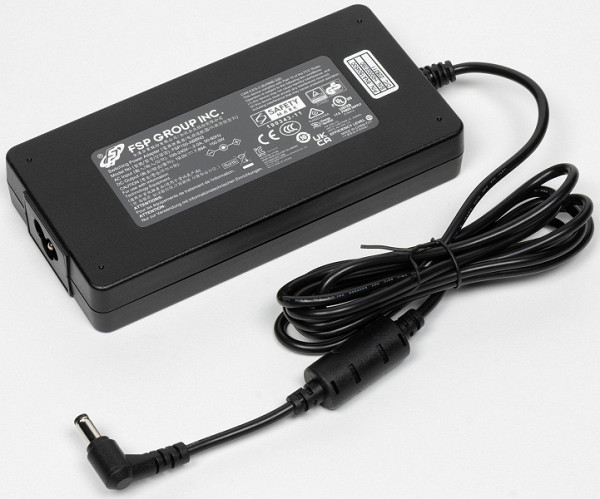
A 150-watt power adapter is included, which is lightweight and compact, with a coaxial connector for connecting to a laptop. This means that the user has the opportunity to use another power source with a similar connector and sufficient power, including universal adapters with a set of interchangeable “end caps”.

When charging until the battery reaches 100% capacity, the LED located to the right of the power connector turns blue and then turns off.

When the battery is completely discharged, 50% of its capacity is replenished in 1 hour 23 minutes, from 0 to 80% charging lasts 2 hours 15 minutes, and from 0 to 100% — 3 hours 42 minutes.
Load operation and heating
The cooling system of business laptops, including the Thunderbook 16 G2 Pro, usually includes only one fan. However, due to the presence of a discrete graphics card in this model, a dual-fan and dual-radiator design is used.

Two massive copper heat pipes remove heat from the heat sink plates of both computers and are directed to the radiators. Relatively cold outside air enters the case in two streams through holes in the bottom, and hot air is discharged through two radiators through a grille on the rear panel, which is covered by the bottom of the lid when the laptop is closed. In the working position, when the machine lies on the table and the lid is folded back, the obstruction to the output flow is still quite significant, so the front panel of the case above both radiators heats up very much.
We tested the Thunderobot Thunderbook 16 G2 Pro using the powerMax utility under maximum load on only the central processor, only the video card, and both the CPU and GPU. To evaluate how the parameters of the system components change, we present the table below, in which the maximum parameters during overclocking and those established in stable mode are indicated through a fraction. The temperature values at which the automation detects overheating are marked in red. Unfortunately, the HWinfo utility, which we use to take readings, cannot detect fan speed sensors, and the laptop does not have any proprietary utility. Therefore, we cannot give the corresponding values.
| Load | CPU frequencies, GHz | CPU temperature, °C | CPU consumption, W | GPU frequency, GHz | GPU temperature, °C | GPU consumption, W |
|---|---|---|---|---|---|---|
| Inaction | 37 | 6 | 37 | 4 | ||
| On the CPU | P: 3,3/3,1 E: 2,8/2,6 | 96/93 | 69/55 | |||
| On the GPU | 1,7/1,5 | 78 | 50 | |||
| На CPU+GPU | P: 3,2/2,3 E: 2,7/2,3 | 95/87 | 62/35 | 1,2 | 73 | 36 |
When idle, the calculator warms up to 37 °C, the CPU consumption does not exceed 6 W, and the video card consumes about 4 W.
Maximum CPU load
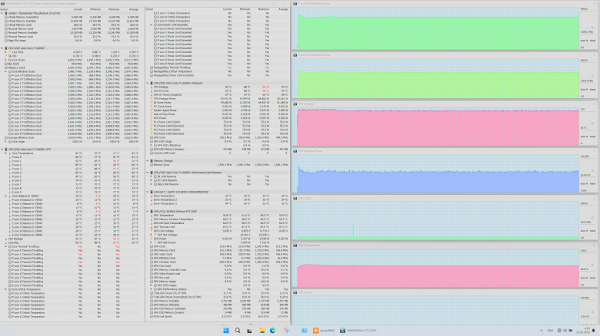
At maximum load on the CPU in the initial period, all graphs show activation of overclocking, although not very pronounced and rather short-lived. With maximum consumption in turbo mode (69 W), the top clock speed is 3.3 GHz for P-cores and 2.8 GHz for E-cores. However, in this case, the central processor overheats (at 96 °C), and throttling develops in the two cores of the first type. In response, the automation reduces consumption to 55 W, the clock frequency of P/E cores to 3.1/2.6 GHz. The temperature stabilizes at 93 °C. Then, until the end of the test runs, all indicators are maintained at the achieved levels.
Maximum load on video accelerator

At maximum load on the GPU, the power output is 50 W as promised in the data sheet, and the clock frequency output is 1.5 GHz. The time-temperature envelope has a wave-like appearance, but is maintained at a safe average level (about 78 °C), although peak values reach 82 °C.
Maximum load on the central processor and video accelerator

With a simultaneous load on both computers for several seconds, the turbo mode is activated with an increase in power output to 62 W, but heating the central processor to 96 °C leads to throttling in the two P-cores. Consumption is reduced to 35 W and the temperature stabilizes at 95 °C. The video card consumes 63 W at a stable temperature of 73 °C.
We believe that the cooling system does not fully meet the needs of the computers. Heat evacuation is greatly complicated, and this may be why the CPU overheats, reactive throttling occurs, and the video card clearly does not have enough power (50 W with the rated 60 W). Even just touching the back of the case reveals very strong heating of the front panel.
Below are thermal images taken after long-term operation of the laptop under maximum load on the CPU and GPU:
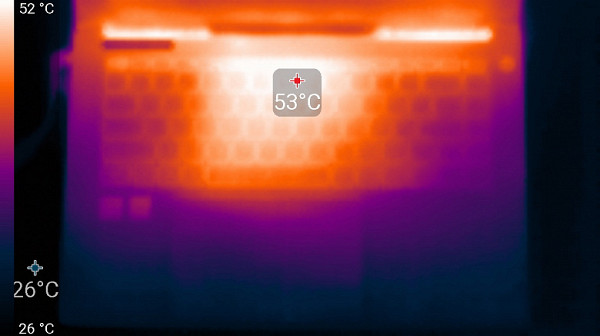
Above
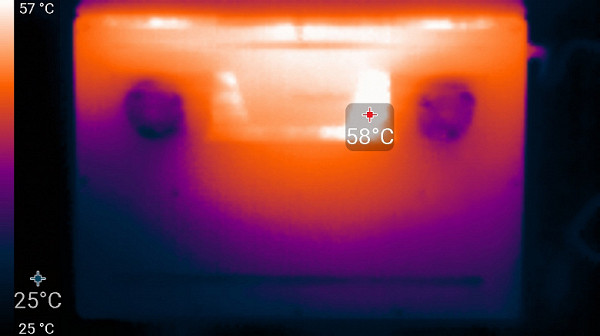
From below
Under maximum load, it is comfortable to work with the keyboard, since the areas under the wrists practically do not heat up. However, touching the far part of the front panel at the bottom edge of the lid is very unpleasant, since these areas are very hot by the underlying radiators. Holding a laptop on your lap is also unpleasant because your knees are partially in contact with high-heat areas. In this position, close the air intake grilles for a short time (which does not happen when the laptop is placed on a flat, hard surface), and this can cause the laptop to overheat. Despite all possible safety measures, overheating can still lead to unpleasant consequences. The power supply gets very hot, so when working for a long time with high performance, you must make sure that it is not covered with something.
Noise level
The noise level is measured in a special soundproof and semi-muffled chamber. The microphone of the sound level meter is placed so as to simulate the typical position of the user's head: the screen is tilted back 45 degrees (or maximum if the screen does not tilt 45 degrees), the axis of the microphone coincides with the normal emanating from the center of the screen, the front end of the microphone is at a distance of 50 cm from the plane of the screen, the microphone is aimed at the screen. The load is created using the powerMax program, the screen brightness is set to maximum, the room temperature is maintained at 24 degrees Celsius, but the laptop is not specifically ventilated, so the air temperature in the immediate vicinity of it may be higher. To estimate real consumption, network consumption is also given (for some modes). The battery is pre-charged to 100%.
| Load scenario | Noise level, dBA | Subjective assessment | Mains consumption, W |
|---|---|---|---|
| Inaction | 22.5 | very quiet | 28 |
| Maximum load on processor and video card | 38.3 | noisy | 107 (max 156) |
If the laptop is not subject to load at all, then its cooling system under the above conditions cannot operate in passive mode for a long time. However, in this case the noise from the cooling system is very low. The nature of the noise, even under high load, remains smooth and does not cause irritation. The spectrogram obtained for maximum load is quite flat, and there are no pronounced peaks in the frequency range where sounds can cause particular irritation:
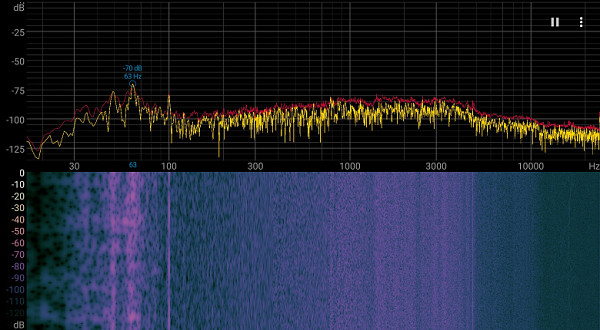
To subjectively assess the noise level, we use the following scale:
| Noise level, dBA | Subjective assessment |
|---|---|
| Less than 20 | conditionally silent |
| 20-25 | very quiet |
| 25-30 | quiet |
| 30—35 | clearly audible |
| 35—40 | noisy |
| 40—45 | very noisy |
| 45—50 | loud |
| Above 50 | very loud |
Below 20 dBA the computer can be considered silent, from 20 to 25 dBA the laptop can be described as very quiet, from 25 to 30 dBA the noise from the cooling system will not stand out much from the background sounds in an office with several employees and working computers. From 30 to 35 dBA the noise will be clearly audible; from 35 to 40 dBA it may exceed a comfortable level for long-term operation. If the noise level is between 40 and 45 dBA, the laptop will be very noisy and may require masking with background music to function. From 45 to 50 dBA the noise level becomes very uncomfortable, and at 50 dBA and above you will need to use headphones. This scale is arbitrary and does not take into account the individual preferences and characteristics of the sound perception of each user.
Performance
Judging by the standards of business laptops, the hardware configuration of the Thunderbook 16 G2 Pro has undoubted advantageous differences. Details are presented in the screenshots of the CPU-Z utility.
Before moving on to the main topic of our testing, let's analyze the performance of some components of the Thunderbook 16 G2 Pro and compare the results obtained with the results of two typical business laptops that were previously in our test lab.
Huawei MateBook 16s CREFG-X:
- Processor: Intel Core i9-13900H
- Integrated graphics: Intel Iris Xe Graphics (96 execution units)
- RAM capacity: 16 GB LPDDR5
- Storage: 1 TB Western Digital PC SN740 NVMe, PCIe Gen 4.0 ×4
- Wi-Fi: tri-band (2.4/5/6 GHz) Intel AX211D2W Wi-Fi 6E, 802.11ax
Tecno Megabook S1 5AM:
- Processor: Intel Core i7-1260P
- Integrated graphics: Intel Iris Xe Graphics (96 execution units)
- RAM capacity: 16 GB LPDDR5
- Storage: 1 TB Foresee FSb0C001T-C6C7200 NVMe, PCIe Gen 4.0 ×4
- Wi-Fi: dual-band (2.4/5 GHz) Intel AX201D2W Wi-Fi 6, 802.11ax
RAM
In this review, we look at the RAM performance of the Thunderbook 16 G2 Pro, which is 16 GB DDR4-3200 in the form of two 8 GB SO-DIMM Samsung M471A1K43EB1-CWE modules. To evaluate RAM performance, we will use the built-in benchmark of the Aida64 utility.

16 GB DDR4 included in Thunderbook 16 G2 Pro
The speeds are not record-breaking, but quite acceptable for a business laptop. Now let's compare them with similar indicators of the two aforementioned competitors:
Let's present the data in diagrams.
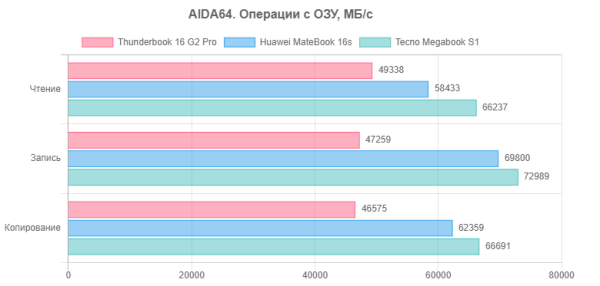
As you can see, in terms of speed of memory operations, the hero of the review is inferior to both rivals.
System storage
Next in our review, we will pay attention to the half-terabyte NVMe SSD SSST/Kioxia CL5-8D512 drive with PCIe Gen 4.0 ×4 interface, which comes bundled with the Thunderbook 16 G2 Pro. To test the performance of this SSD, we will use the CrystalDiskMark utility.

Thunderbook 16 G2 Pro. 512 ГБ SSST/Kioxia CL5-8D512
The values are quite low. This is not the first time that a system drive of a similar model has raised questions. By the way, here’s what competitors demonstrate in similar tests:
For ease of comparison, we present the same data in diagrams.


We decided to expand our testing expertise and added a 4 TB KingSpec XG7000 (TLC) NVMe drive with a PCIe 4 × 4 interface to the second free M.2 slot on the Thunderbook 16 G2 Pro motherboard. Here are its performance results in the CrystalDiskMark test:
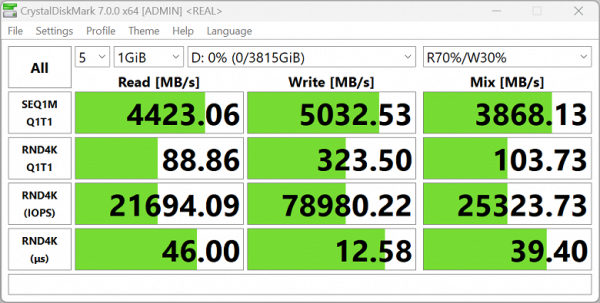
KingSpec XG7000 in the second M.2 slot
However, it should be noted that CrystalDiskMark tests performance by writing and reading blocks of data that are relatively small in total. That is why the results of its testing do not always fully reflect the real performance of the device. To more accurately assess the performance of the NVMe SSST/Kioxia CL5-8D512, we will test it by simply copying a folder with files totaling 70 GB from a newly installed KingSpec XG7000 onto it.

Copying from KingSpec XG7000 to SSST/Kioxia CL5-8D512 system drive
First, the write speed reaches 1400 MB/s only during the first ten seconds, then decreases to approximately 500 MB/s, and by the end of the first minute further decreases to tens of MB/s. Sometimes copying will idle at zero speed for a few seconds and then resume.
Even copying via an external USB 3.2 Gen2 port using a Netac NI3000 NVMe drive installed in an Orico external enclosure with the appropriate interface (maximum speed 20 Gbps) to a KingSpec XG7000 NVMe drive installed in the second M.2 slot on the motherboard, happens much faster.
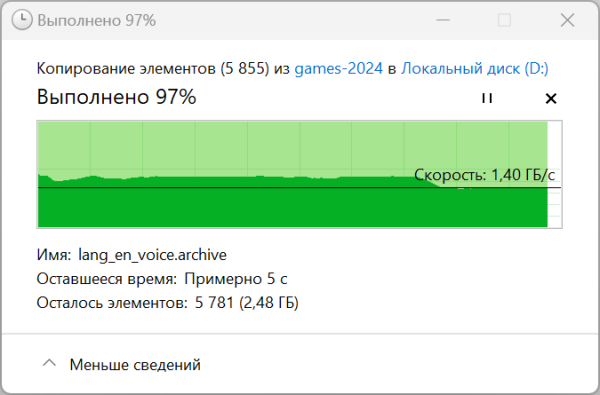
Netac NI3000 over USB 3.2 Gen2 to KingFast XG7000 in M.2
The described surprises with the bundled SSST/Kioxia CL5-8D512 cannot but affect performance indicators in real applications.
Wi-Fi
To test the reliability of the Thunderbook 16 G2 Pro wireless adapter, we will conduct tests in a network environment using a TP-Link Archer AX72 AX5400 class router. The control desktop has a 2.5-gigabit PCIe adapter TP-Link TX201. We will run the iperf3 client application on the desktop and the iperf3 server application on the Thunderbook 16 G2 Pro.
The results are comparable to those of two other portable devices:
- Thunderobot Zero G3 MAX with Intel AX201NGW
- Tecno Megabook S1 5AM with Intel AX201D2W
For each device we will test in three different conditions:
- At a distance of 4 m from the router in direct visibility without obstacles.
- At a distance of 4 m from the router with one brick wall as an obstacle.
- At a distance of 6 m from the router with two brick walls as obstacles.
The iperf3 server application will be running on each client device. On a desktop connected to the router with a UTP Cat5E cable, the iperf3 client application will be launched. The results will be presented in three tables for each location.
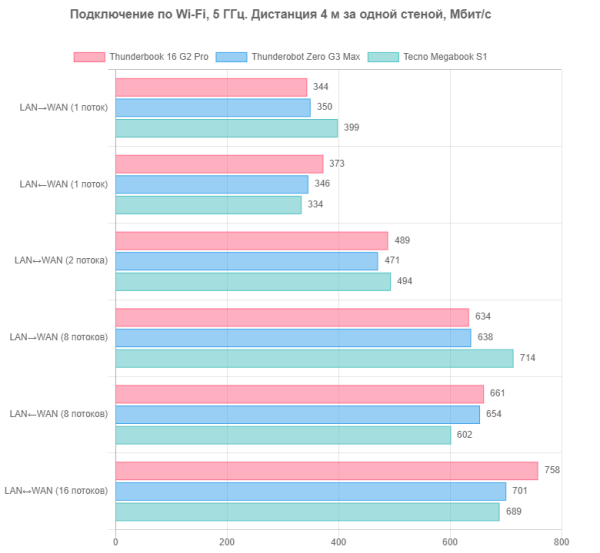
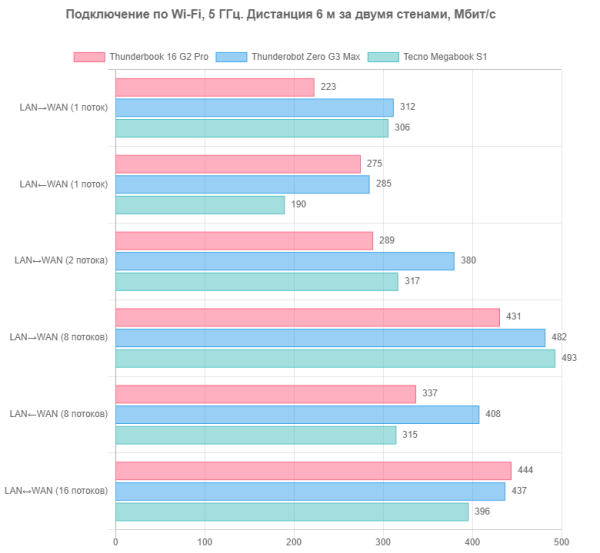
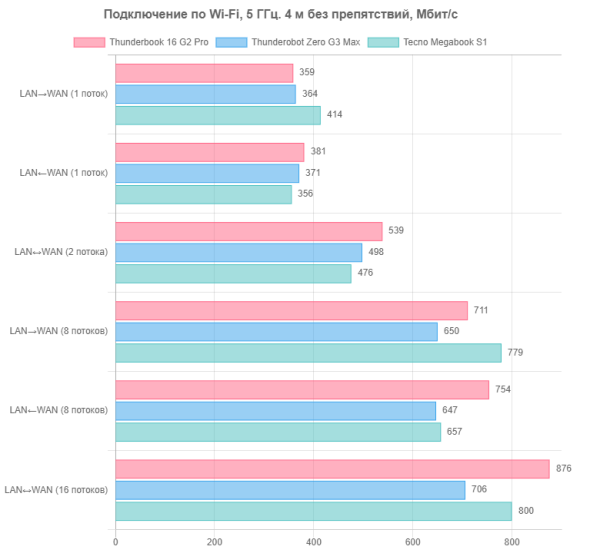
The connection speeds of the Intel AX201 adapter on the Samsung Galaxy Book3 Pro are practically no different from similar solutions from competitors. Possible slight differences may be due to various factors such as RF spectrum (measurements taken at different times), antenna placement and housing materials. However, in general, radio communication on the Samsung Galaxy Book3 Pro is stable and reliable.
Application tests
Our hero's processor (Intel Core i7-12650H) is a chip with average power consumption for laptop computers. Let's look at the HWinfo utility report for low-level indicators:
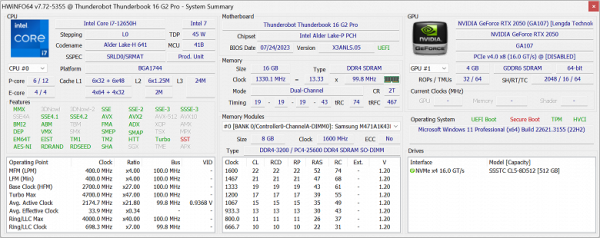
Let's move on to comparative tests of the Thunderbook 16 G2 Pro with laptops:
Intel NUX X15 (LAPAC71H)
- Intel Core i7-12700H (8 cores/16 threads, 3.7/4.8 GHz, TDP 45/115 W)
- Intel Arc A730M video card (12 GB GDDR6)
- 32 GB DDR5-4800 in dual channel mode
- 2 TB NVMe Kingston SNV2S/2000GCN, PCIe 4.0 x4
Thunderobot 911 Air D
- Intel Core i5-11260H (6 cores/12 threads, 2.6/4.4 GHz, TDP 45 W)
- Nvidia GeForce GTX 1650 video card (4 GB GDDR6)
- 8 GB DDR4-3200 in single-channel mode
- 256 GB NVMe Kimtigo MG981K, PCIe 3 ×4
The left column of the table will show the performance of a reference desktop with a 6-core Intel Core i5-9600K processor.
| Test | Reference result (Intel Core i5-9600K) | Thunderbook 16 G2 Pro (Intel Core i7-12650H) | Intel NUC X15 (Intel Core i7-12700H) | Thunderobot 911 Air D (Intel Core i5-11260H) |
|---|---|---|---|---|
| Video conversion, points | 100 | 145 | 151 | 113 |
| MediaCoder x64 0.8.57, c | 132 | 85 | 95 | 115 |
| HandBrake 1.2.2, c | 157 | 110 | 92 | 141 |
| VidCoder 4.36, c | 386 | 280 | 267 | 347 |
| Rendering, points | 100 | 138 | 125 | 125 |
| POV-Ray 3.7, with | 99 | 125 | 74 | 95 |
| Cinebench R20, s | 122 | 70 | 93 | 94 |
| Blender 2.79, with | 152 | 100 | 133 | 125 |
| Adobe Photoshop CC 2019 (3D rendering), c | 150 | 86 | 125 | 102 |
| Video content creation, points | 100 | 148 | 161 | 101 |
| Adobe Premiere Pro CC 2019 v13.01.13, c | 299 | 208 | — | 264 |
| Magix Vegas Pro 16.0, c | 364 | 221 | 199 | 457 |
| Magix Movie Edit Pro 2019 Premium v.18.03.261, c | 413 | 276 | 223 | — |
| Adobe After Effects CC 2019 v 16.0.1, with | 469 | 279 | 381 | 402 |
| Photodex ProShow Producer 9.0.3782, c | 191 | 158 | — | 189 |
| Digital photo processing, points | 100 | 107 | 167 | 105 |
| Adobe Photoshop CC 2019, s | 864 | 669 | 573 | 787 |
| Adobe Lightroom Classic CC 2019 v16.0.1, c | 139 | 205 | 94 | 203 |
| Phase One Capture One Pro 12.0, c | 254 | 182 | 121 | 164 |
| Text recognition, points | 100 | 180 | 149 | 139 |
| Abbyy FineReader 14 Enterprise, c | 492 | 274 | 331 | 354 |
| Archiving, points | 100 | 78 | 155 | 111 |
| WinRAR 5.71 (64-bit), c | 472 | 1380 | 312 | 430 |
| 7-Zip 19, c | 389 | 219 | 246 | 346 |
| Scientific calculations, points | 100 | 134 | 129 | 109 |
| LAMMPS 64-bit, c | 152 | 99 | 86 | 136 |
| NAMD 2.11, with | 167 | 106 | 168 | 150 |
| Mathworks Matlab R2018b, c | 71 | 52 | 72 | 66 |
| Dassault SolidWorks 2018 SP05 + Flow Simulation, c | 130 | 134 | 83 | 123 |
| Integral result excluding storage, points | 100 | 129 | 147 | 114 |
| WinRAR 5.71 (Store), c | 78 | 640 | 21 | 33 |
| Data copying speed, s | 43 | 73 | eleven | 16 |
| Integral result of the accumulator, points | 100 | 27 | 377 | 249 |
| Integral performance result, points | 100 | 80 | 195 | 144 |
Achievements look more clearly in the diagrams (by nomination).
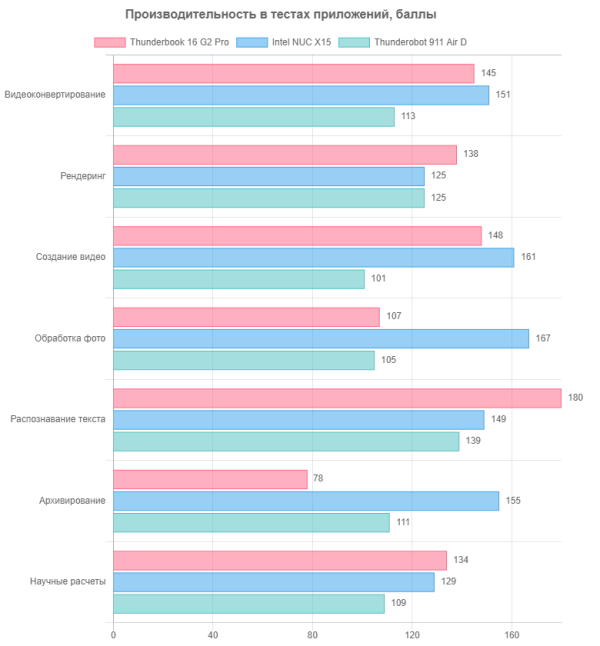
The Thunderbook 16 G2 Pro delivers impressive performance in its class and stands out among its gaming-focused competitors, even though it's not the most powerful. In tests related to video conversion, rendering, text recognition and scientific computing, it leads both competitors, ranking second in video content creation and digital image processing. This confirms his ability to successfully cope with complex computing tasks, as well as his readiness to perform creative tasks in creating and editing media content.

However, there is also a weak link that significantly reduces overall performance — these are the discovered shortcomings of the system drive. Its integral score is only 27 points — this is three times lower than that of a reference desktop PC with a SATA SSD drive, and 14 times worse than that of the test leader — Intel NUC.
Game testing
Although the Thunderobot Thunderbook 16 G2 Pro is not billed as a portable gaming machine and is intended for business tasks, its inclusion of discrete graphics opens up the possibility of using it for gaming purposes.
We tested its gaming performance, comparing it to other business-oriented laptops, as well as gaming machines equipped with comparable graphics cards. In the first series of tests, we set the graphics settings to medium and turned off the antialiasing off options for business-oriented opponents. In the second series, we tested performance at maximum graphics settings and compared the Thunderbook 16 G2 Pro with gaming machines found in an archive of benchmarks from the last four years.
While it may seem a little out of place to compare a laptop with discrete graphics to integrated-only models, it does serve to highlight the Thunderbook 16 G2 Pro's features and specialization.
Among business laptops
To compare the indicators, the data used was obtained by the hero of the review and business laptops with integrated Intel Iris Xe Graphics video accelerators with medium graphics settings and antialiasing off:
- Samsung Galaxy Book3 Pro
- Tecno Megabook S1 5AM
| A game | Thunderbook 16 G2 Pro GeForce RTX 2050, 50 W | Samsung Galaxy Book3 Pro Intel Iris Xe Graphics | Tecno Megabook S1 Intel Iris Xe Graphics |
|---|---|---|---|
| World of Tanks | 220/128 | 99/66 | 74/48 |
| F1 2018 | 163/134 | 69/66 | 58/48 |
| Gears 5 | 78/63 | 48/32 | 46/26 |
| A Total War Saga: Troy | 81/69 | 49/42 | 43/37 |
Let's present the average and minimum fps separately on the diagrams.

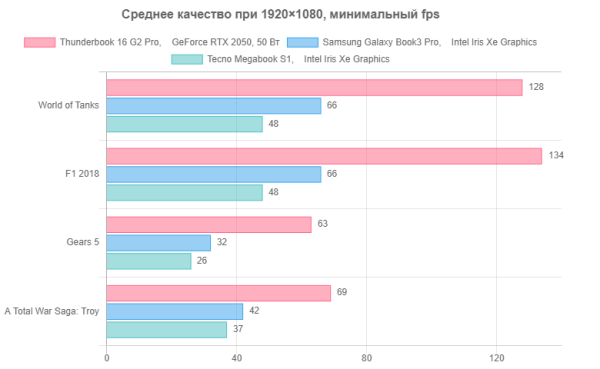
As expected, the results of the Thunderbook 16 G2 Pro were very impressive. Moreover, unlike our competitors, our laptop has a GPU that can support ray tracing. This gives him a significant advantage over rivals who do not have this ability.
Among gaming laptops
In all benchmarks, the maximum graphics complexity is selected (Ultra presets). The competitors are gaming machines of comparable capabilities:
- Intel NUX X15 (LAPAC71H) with Intel Core i7-12700H and Intel Arc A730M graphics card
- Asus TUF Gaming A15 FX506IV with AMD Ryzen 4800H and Nvidia GeForce RTX 2060 (6GB)
| A game | Thunderbook 16 G2 Pro GeForce RTX 2050 4 GB, 50 W | Intel NUC X15 Intel Arc 730M, 75 W | Asus TUF Gaming A15 GeForce RTX 2060 6 GB, 90 W |
|---|---|---|---|
| World of Tanks | 87/57 | 120/82 | 149/95 |
| World of Tanks (RT) | 63/40 | 92/65 | 100/64 |
| F1 2018 | 81/66 | 102/73 | 90/78 |
| Gears 5 | 52/40 | 61/40 | 72/56 |
| A Total War Saga: Troy | 32/24 | 43/35 | — |
Diagrams of average and minimum fps are presented below.
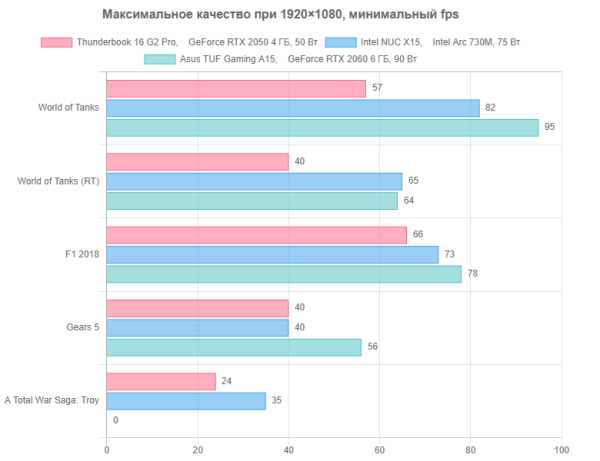
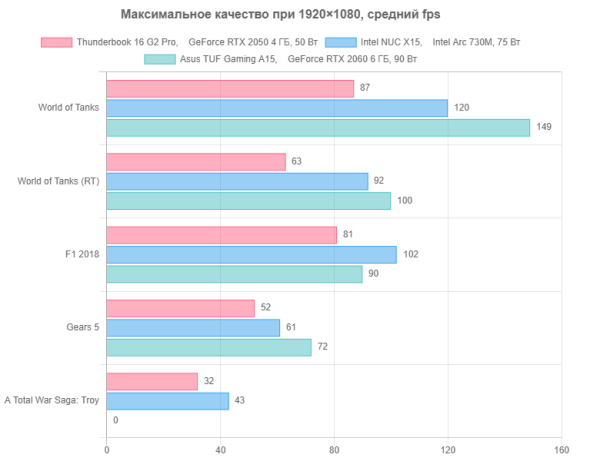
Although the rivals turned out to be slightly stronger than the hero of the review, it should be taken into account that they are equipped with more powerful video cards. However, the minimum fps of our review device still looks quite decent and ensures playability in all cases, with the exception of A Total War Saga: Troy.
Conclusion
We tested a laptop that is the result of hardware hybridization. Externally, it looks like a typical business model with a relatively thin magnesium alloy body, with a characteristic arrangement of connectors and ports on both sides, and the cooling system is located in the gaps between the back panel and the lid. Its hardware is dominated by an Intel Core i7-12650H processor and a discrete Nvidia GeForce RTX 2050 Laptop graphics card with 4 GB GDDR6. The 16-inch laptop's screen has a 2.5K resolution with a 16:10 aspect ratio, which is convenient for office work, and its maximum brightness is impressive. The amount of RAM is 16 GB, distributed over two slots. External monitors are connected via HDMI and two USB 3.2 Gen2 ports, allowing you to use three monitors simultaneously. There is a webcam (720p), although without a mechanical shutter, but there are no fingerprints.
The SSST/Kioxia CL5-8D512 512 GB system drive, although connected to PCIe 4 × 4, exhibits file operation speeds more typical of a hard drive than NVMe, which is the main weak point when evaluating performance.
In terms of gaming capabilities, the laptop occupies an intermediate position: above traditional business models with integrated graphics, but below even more modest gaming models with more powerful graphics cards. However, the presence of a discrete video accelerator significantly expands the range of user tasks, including media content creation, video encoding and scientific calculations, while maintaining a compact and lightweight business model form factor.




